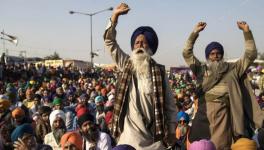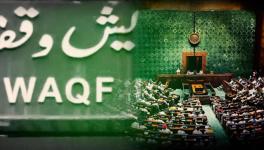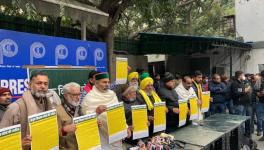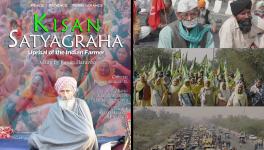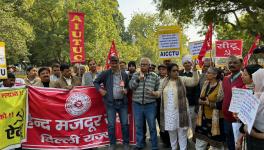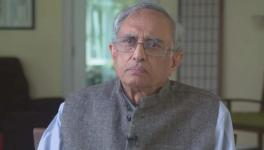Why Everyone in Punjab loves a Dalit CM
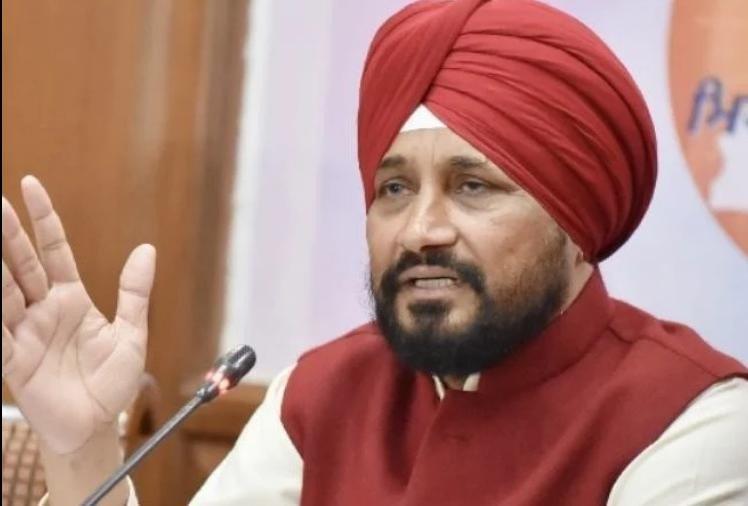
Ever since the Congress chose Charanjit Singh Channi to succeed Capt Amarinder Singh as Punjab’s new chief minister, Prof Ronki Ram has been inundated with phone calls from media outlets. Ram, who teaches political science at Panjab University, Chandigarh, is widely considered an authority on Dalits. No wonder, just about every caller wants Ram to explain the bewildering heterogeneity of Punjab’s Dalit community, which comprises 39 subgroups and together account for nearly 32% of the state’s population.
Their questions are more or less similar: Who are Ramdassia Dalits, the subgroup to which Channi belongs? How do they differ from those of other Dalit subgroups? Will the Congress’s decision to give Punjab its first Dalit Chief Minister inspire the community to sink their internal differences and overcome conflicting political affiliations to rally behind Channi and vote for his party in the Assembly elections, due in four months?
“Yes, to a great extent,” Ram said to them. “Channi as chief minister gives Punjab’s Dalit community an opportunity to build their social and cultural capital for the future.”
It is the future in which Dalits hope to aspire for equality and better their life chances. Although comprising 32% of the state’s population, they occupy only 3.20% of the total area under cultivation. This is a compelling reason why Dalits have been unable to translate their numerical strength to acquire political power.
Dalits aren’t just Dalit
Their lack of economic clout has been compounded also because of the internal cleavages in the community. There are four major subgroups: The Mazhabis account for 29.72% of Punjab’s Scheduled Caste population, the Chamars are 23.45%, the Ad-dharmis are 11.48% and the Balmikis are 9.78%. The remaining 35 subgroups make up the remaining 25.57%.
This categorisation of subcastes is for official purposes such as reservation. In reality, though, the Dalit identity is far more complicated. It overlaps with subcaste, religious, and occupational identities. Even more significantly, these identities have been continuously redefined.
Take the emergence and evolution of Ad-dharm, which was founded by Babu Mangu Ram (1886-1980). Caste-based exclusion denied Mangu Ram the chance to complete his matriculation. In 1909, he migrated to the United States of America, joined the revolutionary Ghadar movement, and returned to Punjab 16 years later.
Socialised in the ethos of equality, Mangu Ram was stunned to witness the persistence of caste discrimination in India. He formalised a programme for the uplift of the community which was then known as the Untouchables. Under the Land Alienation Act of 1900, they were denied the right to own agricultural land. They did not have ownership rights to the land on which they had built their houses, which could not be pucca.
The Ad-dharmis, under the leadership of Mangu Ram, said they were followers of saint-poet Ravidass, a cobbler by occupation, who lived between the 15th and 16th centuries. Ravidass did not advocate conversion as a route to equality and upward social mobility. Instead, he taught the caste of leather workers to take pride in their occupation. The Ad-dharmis also claimed to be India’s original inhabitants who had been socially shackled by the “outsiders” or the upper castes.
Before the 1931 Census, Mangu Ram and his followers mounted pressure on the British Indian government to recognise Ad-Dharm as a separate religion. The demand was accepted. Around five lakh Untouchables reported themselves as Ad-dharmis. The Ad-dharmis continued to gather new adherents since then. This process gathered momentum because of the mushrooming of Ravidass Deras or Gurughars, built on donations from the Ad-Dharmi diaspora.
A new religion is born
A new turn in the evolution of Punjab’s Dalit identity came in 2009 when two revered Ravidassia sants were assassinated in Vienna. In a paper, Ronki Ram writes that the followers of Dera Sachkhand Ballan near Jalandhar, one of the most popular Dalit religious centres and a symbol of Dalit assertion in North India, saw the bloody episode in Vienna as an attack on their separate Dalit identity.
The attack goaded the Ravidassias to redefine themselves as a separate religious community publicly. They respect the ten Sikh gurus and the Guru Granth Sahib but consider Sant Ravidass supreme. They also do not adhere to the tenet of Sikhism that there can be no Guru after Gobind Singh, the 10th Sikh Guru, as the Guru Granth Sahib embodies the “Living Guru”. Ronki Ram writes, “Ravidassias have a separate religious code of conduct tightly woven around the bani (spiritual philosophy composed in the form of poetry) of Ravidass, their Guru.”
It is possible for an Ad-dharmi to also be Ravidassia. Both have a religious identity distinct from Dalit Sikhs and Balmiki Hindus. Dalit Sikhs are themselves subdivided into two groups—the Mazhabi/Rangreta and the Ramdassia.
Mazhbis were formerly sweepers and fought in the battles waged by Guru Gobind Singh. They constituted one of the five dals or warrior bands and played a crucial role in establishing Sikh power in the 18-19th century. However, after Maharaja Ranjit Singh established his empire, the Jat Sikh aristocracy sought to curtail the role of Rangretas and show them, so to speak, their place in the caste hierarchy.
The other subgroup of Dalit Sikhs is Ramdassia, whose members belonged to that segment of the Chamar caste who had taken to weaving. Originally Hindus, they converted to Sikhism under Ram Das, the fourth Sikh Guru, and thereafter. The late Bahujan Samaj Party leader Kanshi Ram was Ramdassia, as is Chief Minister Channi.
Land vs Identity
Given the multiplicity of Dalit identities, it might be presumptuous to think a Ramdassia Chief Minister will necessarily consolidate all subgroups into a monolith vote bank. Yet it is advantage Congress, for the buzz among Dalits of all subcastes and religious hues is that, finally, one of them has been thought worthy to become chief minister.
A more enduring consolidation of Dalits, however, will likely happen if Channi addresses the land question. Mahipal, finance secretary, Dehati Mazdur Sabha Punjab, said to this writer, “The Congress cannot make huge gains as long as Channi pursues the neo-liberal policies of [former chief minister] Capt Amarinder Singh. Channi must address the problem of the landless.”
An agitation is already afoot under the aegis of the Front of Rural and Agricultural Labour Organisations. It is the Dalits who mostly comprise these labour organisations that have banded together under the Front.
The Front has, in the main, three demands: the landless must be given residential plots measuring five Marla, roughly 125 square yards; cancellation of all loans the landless have taken, including even those from money lenders; and allocation of one-third of panchayati agricultural land to those who are genuinely Scheduled Caste, as provided for under the Punjab Village Common Land (Regulation) Act, 1961. For long, Jat Sikh landlords have been fielding dummy Dalit candidates in the bidding process through which the allocation of panchayati land is carried out.
In fact, between 9 August and 11 August, the Front had organised an agitation in Patiala on these counts. On the third day, borrowing the tactic from the farmer movement, they began their march to gherao Moti Mahal, the residential quarters of Capt Amarinder Singh. The district administration dissuaded them from doing so, promising them a meeting with Brahm Mohindra, the minister who was ranked next to Capt Singh in the order of precedence.
Dissatisfied with Mohindra’s assurances, the Front planned to gherao the Punjab Finance Minister between 1 September and 3 September. They called off the gherao after yet another meeting was promised between Front representatives and senior bureaucrats of the Land and Panchayats Department on 7 September. It was then decided that the Front leaders would parley with the Special Secretary to the Chief Minister on 23rd September. “And now that the Captain is gone, no one knows what will happen next,” said Mahipal.
Well, for starters, they can hope a Dalit chief minister will have empathy for the landless. “Sure, caste is an important factor in Punjab,” said Tarsem Peter, state president, Pendu Mazdoor Union. He said he prefers to rely on the ongoing agitation than the Dalit Chief Minister for concrete results on the land question. “One person cannot make a difference. We do not think a drastic change can happen,” Peter said.
It will likely not happen because the misappropriation of panchayati land benefits the powerful Jat Sikh landlords, whose interests no party dares to undermine.
Can Channi dare?
There is also Channi’s personality. For instance, Lachhman Singh Sewewala, general secretary, Punjab Khet Mazdoor Union, is pessimistic about Channi, recalling his ineffectual intervention in a conflict between Jat Sikhs and Dalits in Jawahre Wala village, Muktsar district, in July 2019. Then the two communities, both led by local Congress leaders, had sharp differences over how to execute an MG-NREGA project. The Jat Sikh leader, in pique, shot dead two Dalits. Labour organisations refused to conduct the last rites of the victims until the alleged assailant was arrested.
Channi was in Muktsar then. He persuaded the agitators to conduct the last rites and assured justice to Dalits. “I was there at the meeting. Channi’s language was typically the mainstream politician’s. He talked of reconciliation and justice in the same breath. The culprit was never arrested.”
Indeed, Punjab’s politics is past tokenism, even though Lachhman Singh and others do fathom the value of political symbolism. For the symbolism to have value and fetch votes for the Congress, it is important for its leaders to assure that Channi will continue as chief minister if the party wins the Assembly elections. But even this runs the risk of alienating Jat Sikhs. It would seem everyone in Punjab loves a Dalit chief minister as long as he or she does not alter the status quo.
The author is an independent journalist. The views are personal.
Get the latest reports & analysis with people's perspective on Protests, movements & deep analytical videos, discussions of the current affairs in your Telegram app. Subscribe to NewsClick's Telegram channel & get Real-Time updates on stories, as they get published on our website.









